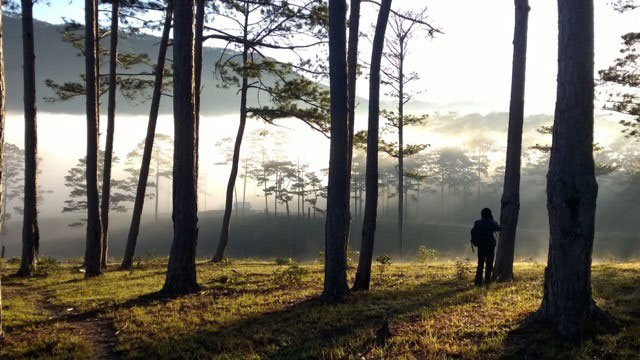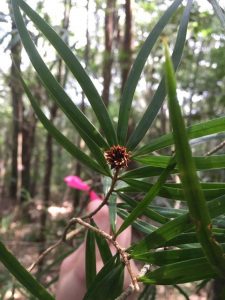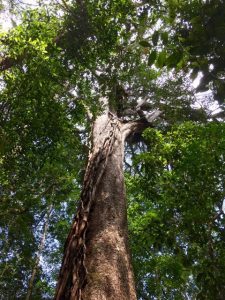Stressed Out: How will Vietnam’s Unique Flat-Leaved Pine Respond to Climate Change?
Posted in Interesting Plant Stories on December 2, 2016 by Stephanie Schmiege
Stephanie Schmiege, a Ph.D. candidate at the Commodore Matthew Perry Graduate Studies Program of The New York Botanical Garden and at the Department of Ecology, Evolution and Environmental Biology of Columbia University, is researching response of conifers to environmental stress under the direction of Drs. Dennis Stevenson and Kevin Griffin.


The Central Highlands of Vietnam are home to the world’s only known flat-leaved pine. Endemic to this area, Pinus krempfii was first discovered by French botanists, who were astounded by its unique leaves and even confused it with species from an entirely different family. Not only is it the only known pine with flat leaves, it is the only pine we know of that successfully survives in dense tropical forests. Scientists think that the flattened leaves may allow Pinus krempfii to absorb more light than most needle-leaved pines, which in turn facilitates its success in the tropics. However, flattened leaves require vulnerable tissues to transport water throughout the leaves.
This trade-off may leave Pinus krempfii susceptible to changes in climate, particularly drought stress. Climate models for Southeast Asia forecast increasingly long dry periods. How will Pinus krempfii respond to increasing drought stress? Will the unique leaves that have assisted its survival in the tropics prove to be its undoing?

To begin the exploration of this question, we performed an experiment in which we exposed Pinus krempfii seedlings to drought stress. When plants experience drought, they respond in different ways. Some attempt to minimize water loss by closing pores (called “stomata”) in their leaves. Others risk losing water so that they can continue making sugars through the process of photosynthesis. We hope that if we can learn more about how this species manages its water, we might be able to predict its response to drought stress. In our short-term dry down experiment, we found that Pinus krempfii closed its stomata relatively quickly when compared to other species from the same habitat.
But there are still many questions to explore. Will its response differ during longer droughts? How vulnerable are the water-transport tissues in the leaves? What is the drought sensitivity of this species compared to other tropical conifers that do not have flat leaves? Next month, we will pack our equipment and return to Vietnam to begin to address some of these questions, so stay tuned for future updates.


